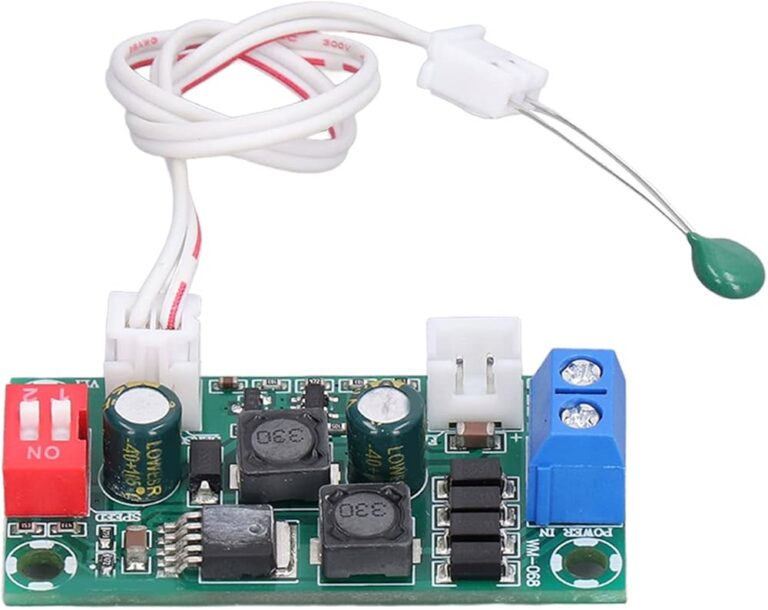Introduction
High-precision sensor modules are sophisticated components designed to measure, detect, and analyze various physical parameters with exceptional accuracy and reliability. These modules are crucial in industries where precise data collection and real-time monitoring are necessary for optimal performance and safety. With advancements in sensor technology, these modules now play a vital role in industrial automation, aerospace, automotive, healthcare, robotics, and environmental monitoring. The demand for high-precision sensors has grown significantly due to their integration with modern technologies such as artificial intelligence (AI), the Internet of Things (IoT), and wireless communication. These sensors are capable of providing accurate data even in harsh environments, making them indispensable for both consumer and industrial applications. Whether used in medical diagnostics, automotive safety systems, or smart agriculture, high-precision sensor modules contribute to efficiency, accuracy, and automation.
Key Features
High Accuracy
High-precision sensor modules are designed to detect even the smallest variations in physical parameters, ensuring precise measurements. They use sophisticated calibration algorithms and error-correction techniques to minimize deviations and enhance accuracy.
Real-Time Data Processing
These modules provide instant feedback, allowing systems to make immediate adjustments based on sensor readings. Real-time data processing is crucial in applications like medical monitoring, industrial automation, and autonomous vehicles, where quick response times are essential for safety and efficiency.
Low Power Consumption
Energy-efficient sensor modules are optimized to operate with minimal power consumption, making them ideal for battery-powered applications such as wearable medical devices, remote monitoring systems, and IoT applications.
Compact and Lightweight Design
Modern sensor modules are designed to be small and lightweight, allowing easy integration into compact devices and systems. Their size makes them suitable for portable medical devices, drones, and embedded industrial applications.
Multi-Sensor Integration
Some advanced sensor modules incorporate multiple sensing capabilities within a single unit. For example, a module might include temperature, pressure, and humidity sensors, enabling comprehensive environmental monitoring in a single device.
Digital and Analog Output Compatibility
High-precision sensor modules support both digital and analog outputs, ensuring compatibility with a wide range of control systems, microcontrollers, and industrial automation platforms. This flexibility makes them suitable for various applications, from simple control circuits to complex AI-driven systems.
Durability and Reliability
Engineered to withstand harsh conditions, these sensors are built with robust materials that can resist extreme temperatures, vibrations, moisture, and corrosive environments. This durability ensures long-term reliability in industrial, aerospace, and automotive applications.
Applications
Industrial Automation
High-precision sensors are essential in automated manufacturing, where they monitor machinery performance, detect faults, and ensure product quality. They help in predictive maintenance by identifying issues before they lead to equipment failures, improving efficiency and reducing downtime.
Healthcare and Medical Devices
In the medical field, high-precision sensors measure critical parameters such as heart rate, blood pressure, body temperature, and oxygen levels. They are integrated into diagnostic equipment, wearable health trackers, and imaging systems to provide real-time health monitoring and early disease detection.
Aerospace and Defense
Sensor modules in aerospace applications ensure flight safety, navigation precision, and environmental monitoring. They are used in aircraft altimeters, gyroscopes, pressure sensors, and missile guidance systems to enhance performance and accuracy in extreme conditions.
Automotive Industry
Modern vehicles rely on high-precision sensors for applications such as adaptive cruise control, collision avoidance, tire pressure monitoring, and fuel efficiency optimization. These sensors improve vehicle automation, enhance safety, and contribute to the development of autonomous driving technologies.
Robotics and AI Systems
Robotic systems depend on sensor modules to perceive their surroundings, detect obstacles, and interact with objects. LiDAR sensors, accelerometers, and gyroscopes provide robots with spatial awareness, enabling them to navigate and operate autonomously with high precision.
Smart Agriculture
In precision farming, sensors monitor soil moisture, temperature, humidity, and nutrient levels to optimize irrigation and fertilization. These data-driven solutions improve crop yields, conserve resources, and enhance sustainability in agricultural operations.
Environmental Monitoring
High-precision sensors are used in air quality monitoring, weather forecasting, and pollution detection. They measure atmospheric parameters such as CO₂ levels, humidity, and particulate matter, providing critical data for climate research and environmental protection initiatives.
Benefits
Enhanced Accuracy
By providing precise and reliable data, high-precision sensors reduce errors and improve the overall efficiency of systems. This accuracy is crucial in applications like medical diagnostics, aerospace navigation, and industrial quality control.
Improved Operational Efficiency
These sensors optimize processes in industrial, automotive, and healthcare sectors by enabling automation and predictive analytics. Real-time monitoring and feedback reduce waste, enhance productivity, and minimize manual intervention.
Cost Savings and Maintenance Optimization
Predictive maintenance enabled by high-precision sensors helps industries avoid unexpected equipment failures. By detecting issues early, companies can schedule maintenance only when necessary, reducing operational costs and increasing equipment lifespan.
Increased Safety and Reliability
From ensuring patient safety in medical devices to enhancing vehicle crash prevention systems, these sensors play a vital role in minimizing risks and improving overall safety in critical applications.
Scalability and Versatility
High-precision sensor modules can be easily adapted to various applications, ranging from consumer electronics to large-scale industrial automation. Their versatility makes them essential in both emerging technologies and well-established industries.
IoT Integration and Remote Monitoring
Many modern sensors feature wireless connectivity, enabling seamless integration into IoT-based systems. They transmit data to cloud platforms for remote monitoring and analytics, enhancing real-time decision-making in smart cities, agriculture, and industrial automation.
Conclusion
High-precision sensor modules have transformed the way industries collect and utilize data, improving efficiency, safety, and reliability across numerous applications. From enabling real-time monitoring in healthcare to enhancing automation in manufacturing and precision control in aerospace, these sensors are at the core of technological advancements. With continuous innovation, the capabilities of these sensor modules are expanding, integrating AI-driven analytics, wireless communication, and cloud-based data processing. Their ability to provide accurate and timely data makes them indispensable in the age of smart technology. As industries continue to adopt intelligent systems, the demand for high-precision sensors will only grow, shaping the future of automation, robotics, and digital transformation. The evolution of high-precision sensor technology promises a future where machines and systems can operate with unprecedented accuracy and efficiency.

